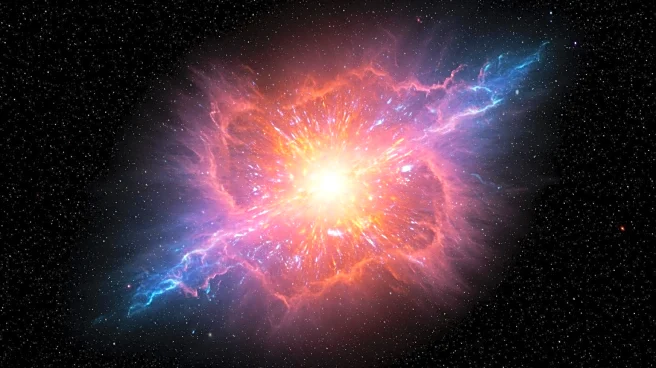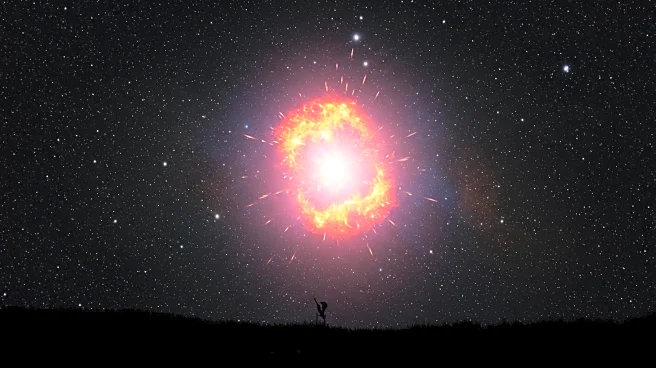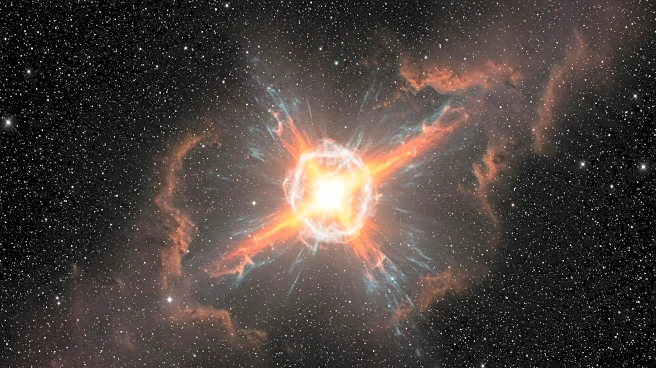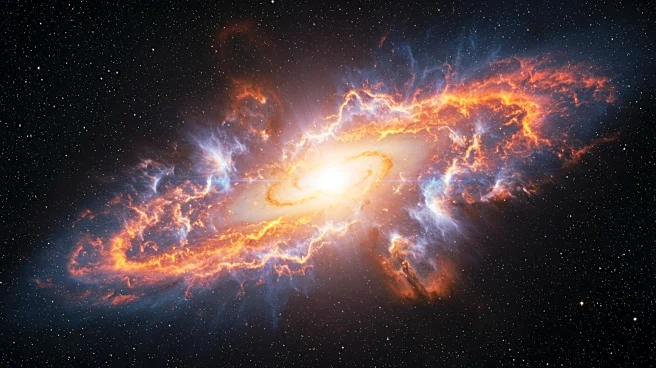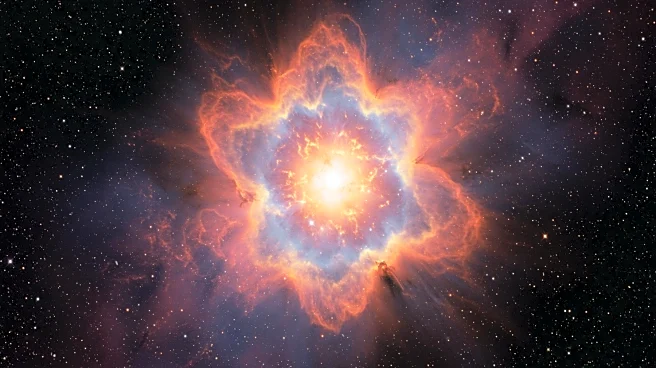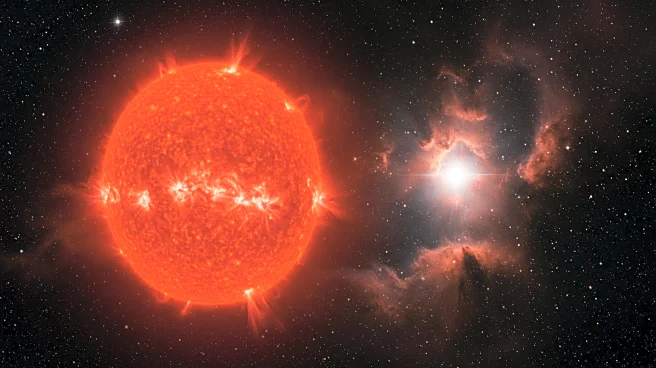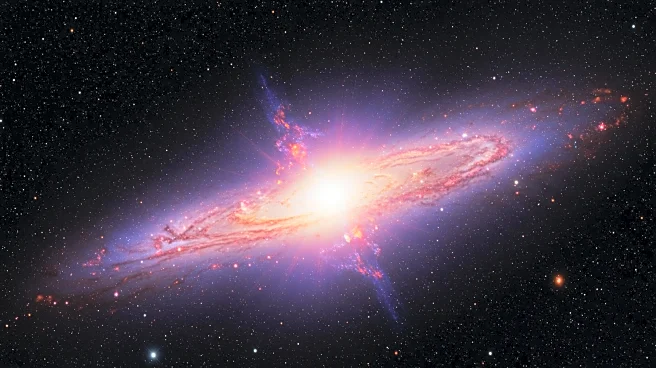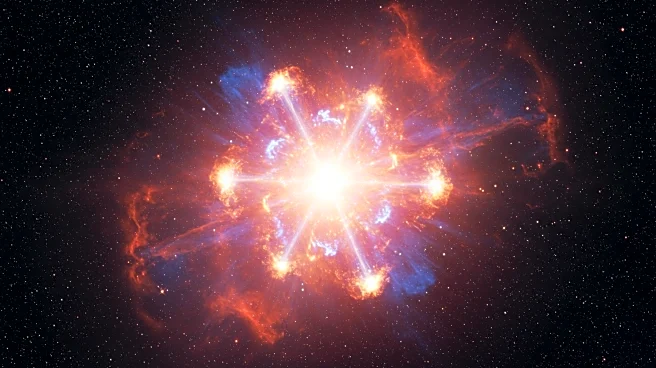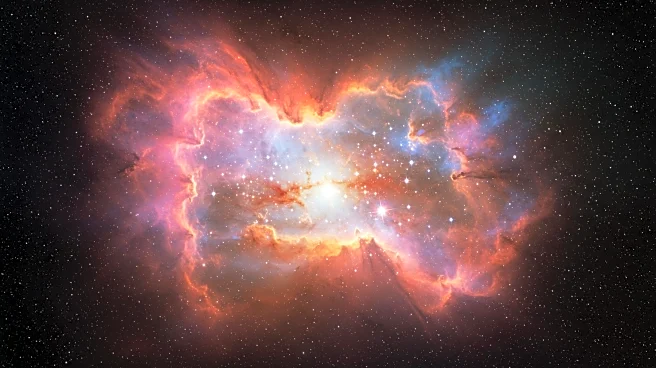What's Happening?
Astronomers have identified a new type of supernova, designated as SN2021yfj, which has provided an unprecedented view into the internal structure of massive stars. This discovery, published in the journal Nature, reveals a star that had lost its outer layers of hydrogen, helium, and carbon before exploding. Uniquely, the star expelled a shell of silicon, sulfur, and argon just before its explosion, a phenomenon not previously observed. This event challenges existing theories of stellar evolution, suggesting that stars can lose significant mass and still produce observable explosions. The supernova was detected using the Zwicky Transient Facility at the Palomar Observatory, with further analysis conducted by the W. M. Keck Observatory in Hawaii.
Why It's Important?
The discovery of this new type of supernova has significant implications for our understanding of stellar evolution. It suggests that current models may not fully capture the complexity of massive stars' life cycles. The ability of a star to lose its outer layers and still explode challenges the conventional sequence of stellar evolution, indicating that there may be more exotic pathways for stars to end their lives. This finding could lead to a reevaluation of how astronomers classify and understand supernovae, potentially impacting the study of cosmic phenomena and the lifecycle of stars.
What's Next?
The research team is exploring the potential causes of the star's unusual behavior, including interactions with a companion star or extreme stellar winds. Further observations and studies are needed to understand the mechanisms behind this phenomenon. The classification of this supernova as a type Ien suggests that astronomers may need to develop new models to account for such events. Continued research could provide deeper insights into the processes that govern the life and death of massive stars, influencing future astronomical studies and theories.
